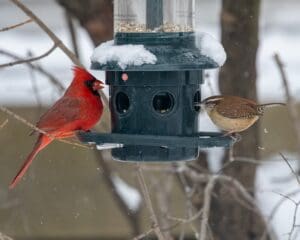
Irises are one of the most beautiful plants that you can enjoy. If you are looking for a way that you can have healthy irises, below are some tips that you can use to enjoy these gorgeous plants.
Fertilizing Can Give You Healthy Irises
Fertilize them early in spring with all-purpose fertilizer you’ve scratched around your plants. don’t use high-nitrogen or mulching with organic matter, since this could cause rhizome rot. Your reblooming irises will bloom best if you fertilize them again once their first wave is done.
Don’t Overwater Your Irises
If you use a lot of moisture in your soil, it can cause their roots to rot. Water deeply and consistently, particularly during a dry summer.
Keep Their Rhizomes Exposed for Healthy Irises
The rhizomes of irises need some air and sun so they can dry out. If they’ve been covered in soil or crowded out with other plants, they are going to rot. Shadow mulching might be a good idea in springtime.
Watch for Pests
Watch out for iris borers inside the foliage. These are vertical dark lines that could appear watering that show up on the leaves.
Cut the Flower Stems to Have Healthy Irises
Once blooming’s finished, cut the stems at the base. However, don’t trim the leaves of irises once blooming is done. The leaves will keep photosynthesis going and they’ll generate the necessary energy for the following year’s growth. Cut the brown tips off and cut down flowering stalks to their rhizome. This will discourage rot.
Cut the Foliage Back
After fall’s hard frost, cut back the foliage hard. Remove any that looks yellowed or spotted and throw the debris away.
If your foliage has been hit with some heavy frost, remove it and then destroy it. This will eliminate the borer eggs. See the frost dates in your area.
Protect the Rhizomes
Cover them using 1-2 inches of sand and then top it with a light evergreen bough layer. This should be applied once the ground has frozen and then remove when your forsythias bloom in spring.
Pests & Diseases That Affect Irises
The good news is that irises are resistant to drought and deer.
The bad news is that they’re susceptible to iris borers. These overwinter as eggs inside spent leaves. Are you seeing vertical streaks in your leaves? You’ll want to look for the pests and kill them. if you’re noticing rot evidence in its rhizome, you want to dig the rhizome up and get rid of those parts that are affected.
Other problems that could affect your irises are:
- Aphids
- Iris weevil
- Whiteflies
- Verbena bud moths
- Nematodes
- Thrips
- Snails and slugs
These are some of the things that you should know when you want to have healthy irises. We hope that you found this to be useful and that you’ll keep coming back. Contact us if you’re interested in our plant health care services. You can also contact us on Facebook.




